Delve into Advanced Materials that will Modernize Facilities
Delve into Advanced Materials that will Modernize Facilities
- Advanced Materials refers to materials that have recently been developed or are under development that show superior performance compared to traditional materials.
- Modern facilities need to rely on advanced materials to enhance potential in various aspects.
- Interesting examples of advanced materials include advanced composites, smart materials and nanomaterials.
The first interesting example is "advanced composites," an engineered materials made from two or more component materials with significantly different physical or chemical properties. It is known for its strength to weight ratio, corrosion resistance, excellent durability and flexibility in design which result in increased efficiency. It also has a long service life and is lightweight, which leads to energy saving and reduced environmental impact.
This type of innovative material has found wide application in industries such as aerospace for aircraft components, lightweight and energy-saving vehicles, and "strong and durable structures" for construction of industrial plants. It is primarily used to produce beams and columns that are lightweight but strong to support the factory building structure. This material is also often used for platforms and elevated walkways within factories because it is durable and corrosion-resistance. Meanwhile, it can also be used as decorative façade elements to enhance the aesthetics of factory buildings.
With these superior properties, advanced composites have become material of choice in modern engineering and design. The global composites market is expected to reach US$168.6 billion by 2027, growing at a compound annual growth rate (CAGR) of 8.2% from 2022 to 2027.
There are also “smart materials,” properties can change in a controlled and predictable manner in response to external stimuli. These materials are designed to exhibit specific characteristics or behavior under certain conditions. This makes them especially useful in applications such as factory construction where they are used to make electrochromic windows which can adjust the level of transparency according to exposure to heat and light. This greatly helps reduce energy use within the factory and in line with the sustainable trend.
The application of nanotechnology in the construction industry has sparked the creation of innovative construction materials with improved functionality, durability, and sustainability. For example, concrete, which is a material often used in construction, tends to deteriorate over time which is harmful to the structural integrity of the facility. However, "nanomaterials" such as self-repairing concrete with nanotechnology offers a groundbreaking answer to this problem. This material can fix the cracks on its own by combining microcapsules with chemicals. These microcapsules break when cracks appear, and releases chemicals used for treatment to create solid fillers, so the cracks are sealed effectively. In addition to extending the life of concrete structures, this technology also significantly reduces maintenance costs and increases structural safety. On the other hand, nanostructured materials with ultra-low thermal conductivity such as aerogel is considered a very good insulator. It is deal for energy efficient buildings because of its outstanding thermal insulation ability despite being lightweight and thin.
In addition, nanosensors are also being used for structural health monitoring. This is because the structural integrity of buildings and infrastructure is important in the construction sector. Nanosensors offer a new way to monitor structural health in real time. These small sensors can be placed in building materials to detect structural changes, tension and damage that may occur, so they enable continuous monitoring of the durability of the structure. Factoring in environmental factors such as temperature, humidity, pollution levels, and identifying defects, cracks, and other indicators of deterioration early is one way of proactive maintenance. It also reduces the chance of serious damage and increases the lifespan of factory buildings. By using advanced materials, modern industrial facilities will be ahead of the curve and meet the demands of efficient production processes, safety and sustainability.
Always stay tuned to our future editions of FacTech Blogs for news on cutting-edge technology in the construction and management solutions. Also, do not miss FacTech during 19-22 June 2024 at BITEC, Bangkok. The event will serve as ASEAN’s only exhibition on factory construction, maintenance, facility management and relevant technologies so you are always on top of what’s best for your business.
Share this Blog on:
Share this Blog on:
